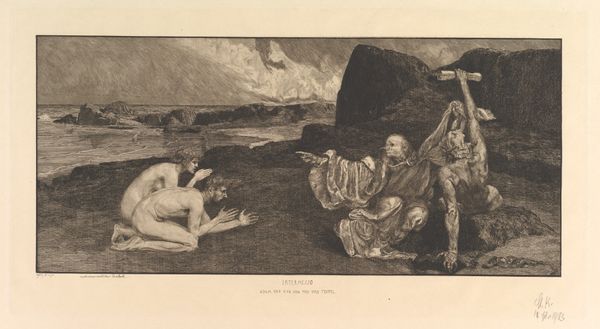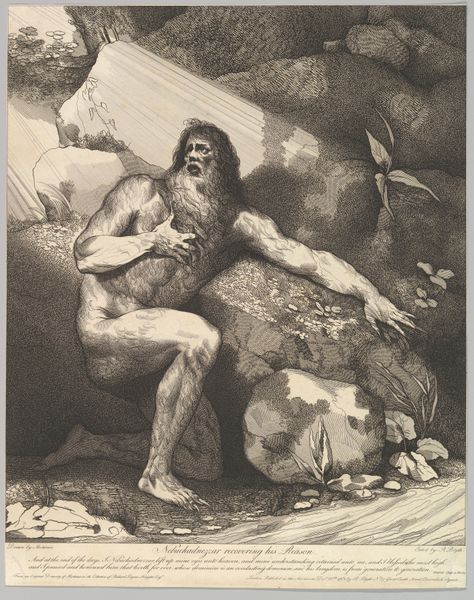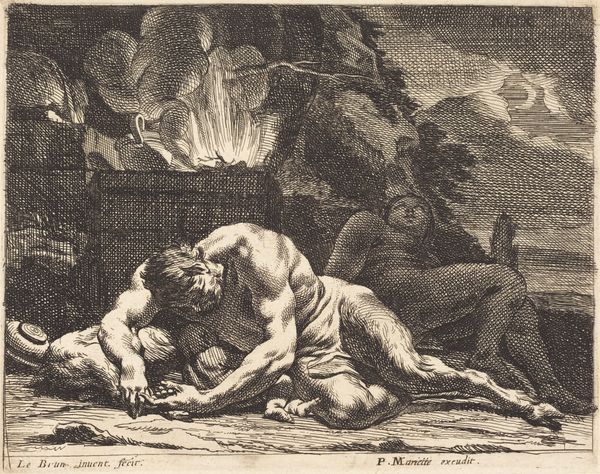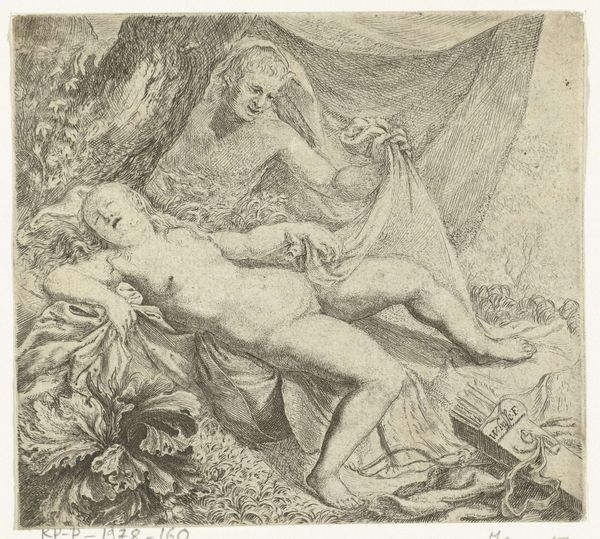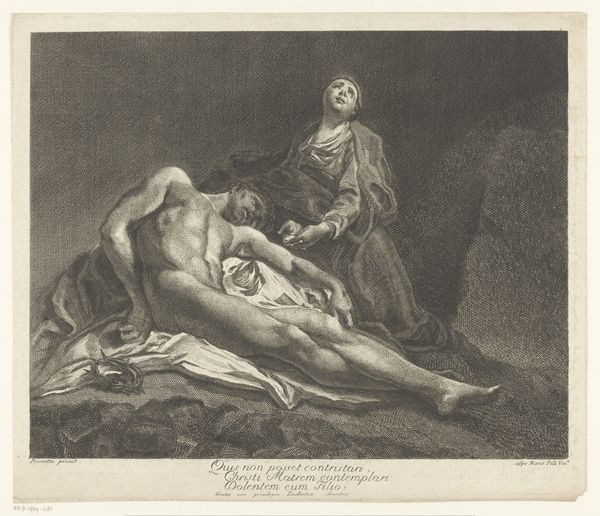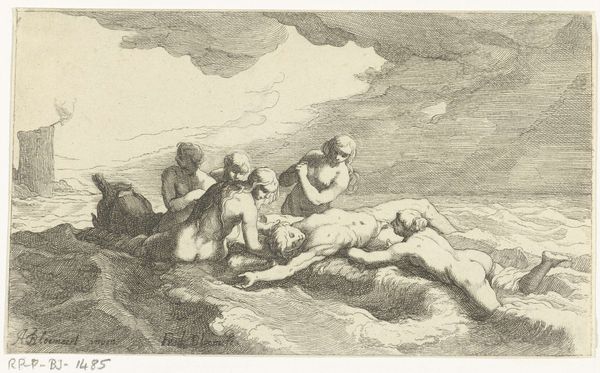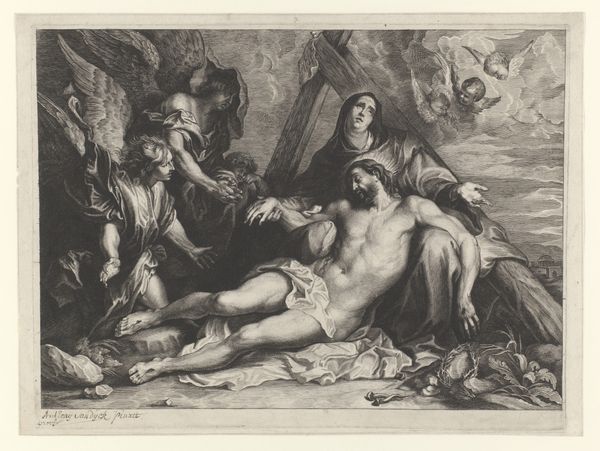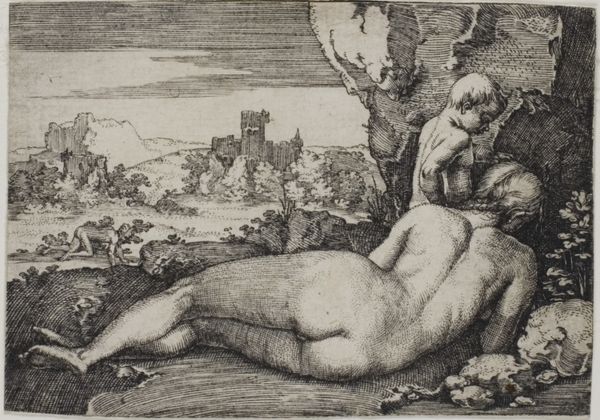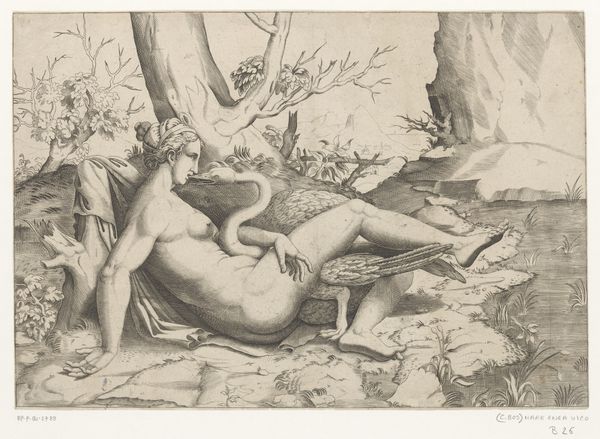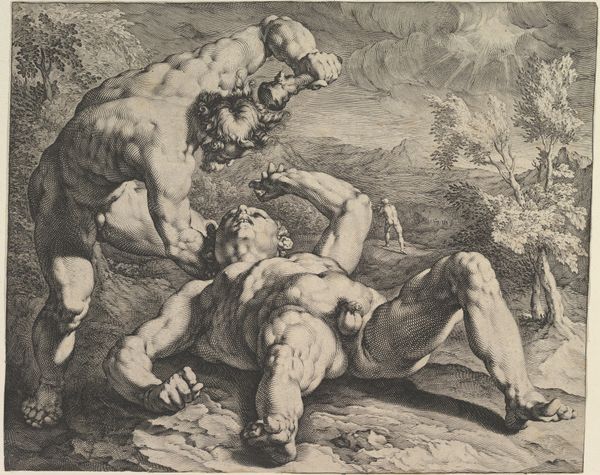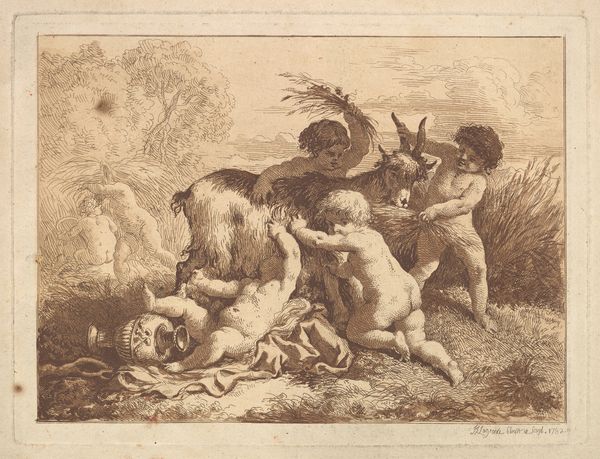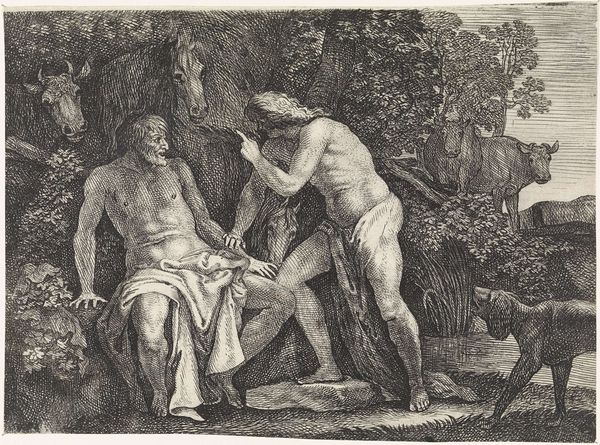
The Blood of Giants illustration for Louis Bouilhet's sonnet in "Sonnets and Etchings" 1869
0:00
0:00
Dimensions: Plate: 5 × 7 13/16 in. (12.7 × 19.8 cm) Sheet: 10 5/16 × 14 1/16 in. (26.2 × 35.7 cm)
Copyright: Public Domain
Editor: This is "The Blood of Giants," an 1869 engraving by J. Bouilhet, made for a collection called "Sonnets and Etchings". The giant figure dominates the landscape; the scale feels really imposing. How do you interpret the imagery at play in this work? Curator: What strikes me first is the juxtaposition of scales and stories: a fallen titan meets tiny figures—celebrants, perhaps? Etchings like these often participate in the romanticising of death, decay, and cultural memory. We’re prompted to reflect on what becomes of legends—they literally fertilize the ground for new narratives. The cycle of death and rebirth is visually striking. What elements speak to you? Editor: I’m really interested in how the giants are rendered. It feels less about heroic strength, and more about vulnerability in the face of inevitable decay. Curator: Precisely. Look at the posture, the way the light catches the vulnerable parts of the body, like the tendons and neck. Consider, too, the etymology of "giant"—often conflated with "titan"—a race overthrown. This isn't simply an image of death, but the death of an order. The imagery suggests a shift in power, new myths being written over old. What stories do you think they are writing? Editor: Perhaps stories about human dominance over nature or even time itself? This has definitely given me a new way of thinking about how artists use symbols to build complex stories. Curator: Indeed. The Blood of Giants suggests that we’re constantly writing new chapters on the palimpsest of history. We memorialize and build our current stories atop past glories and downfalls.
Comments
No comments
Be the first to comment and join the conversation on the ultimate creative platform.
